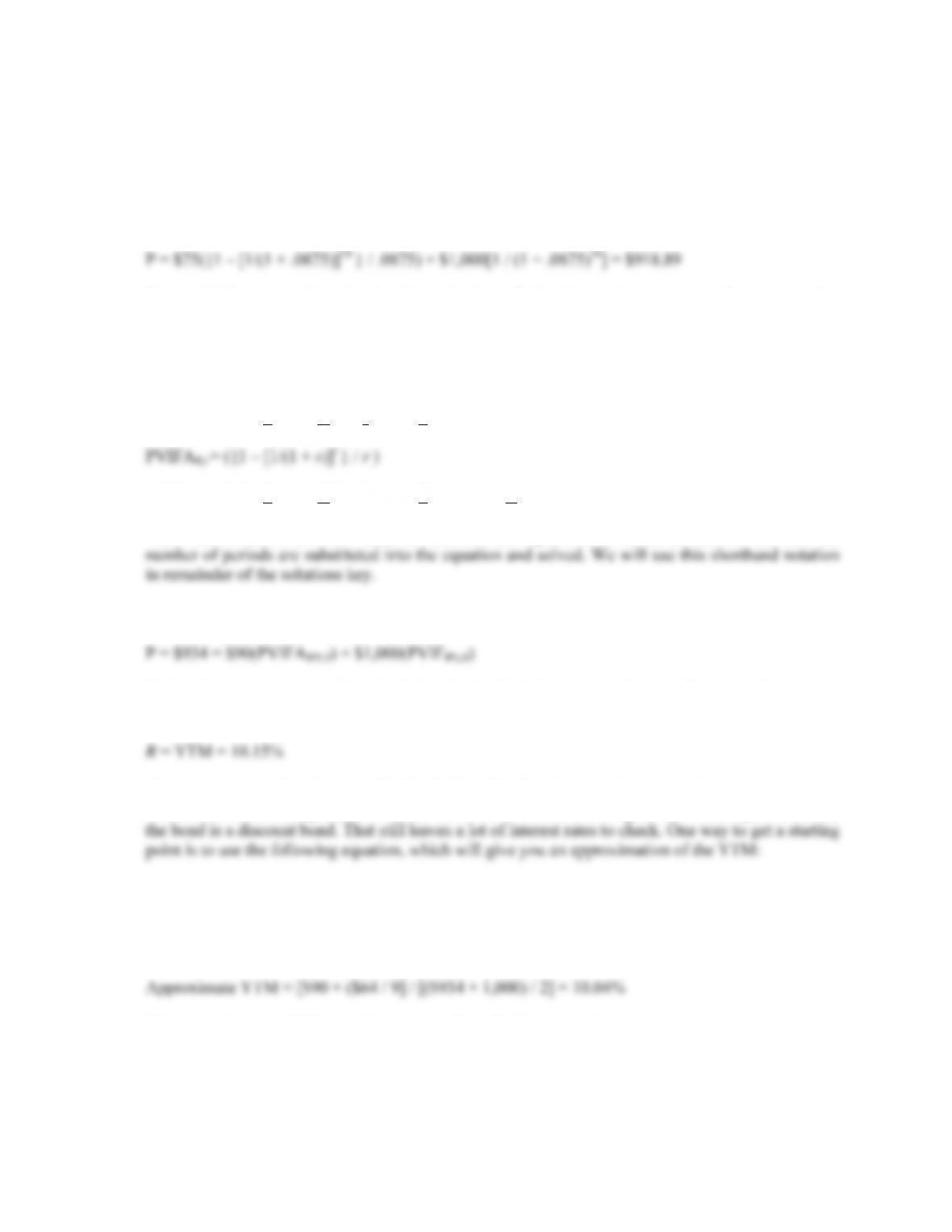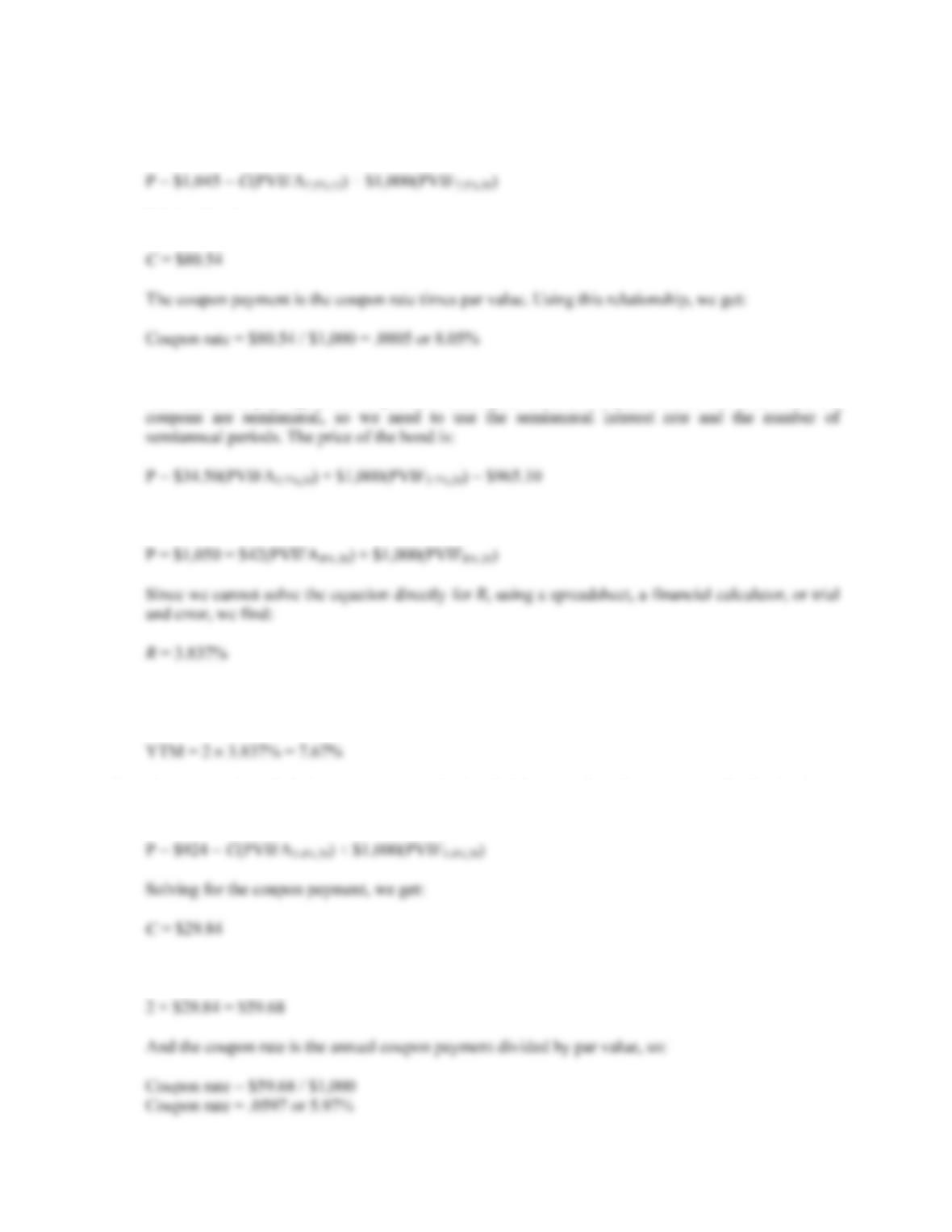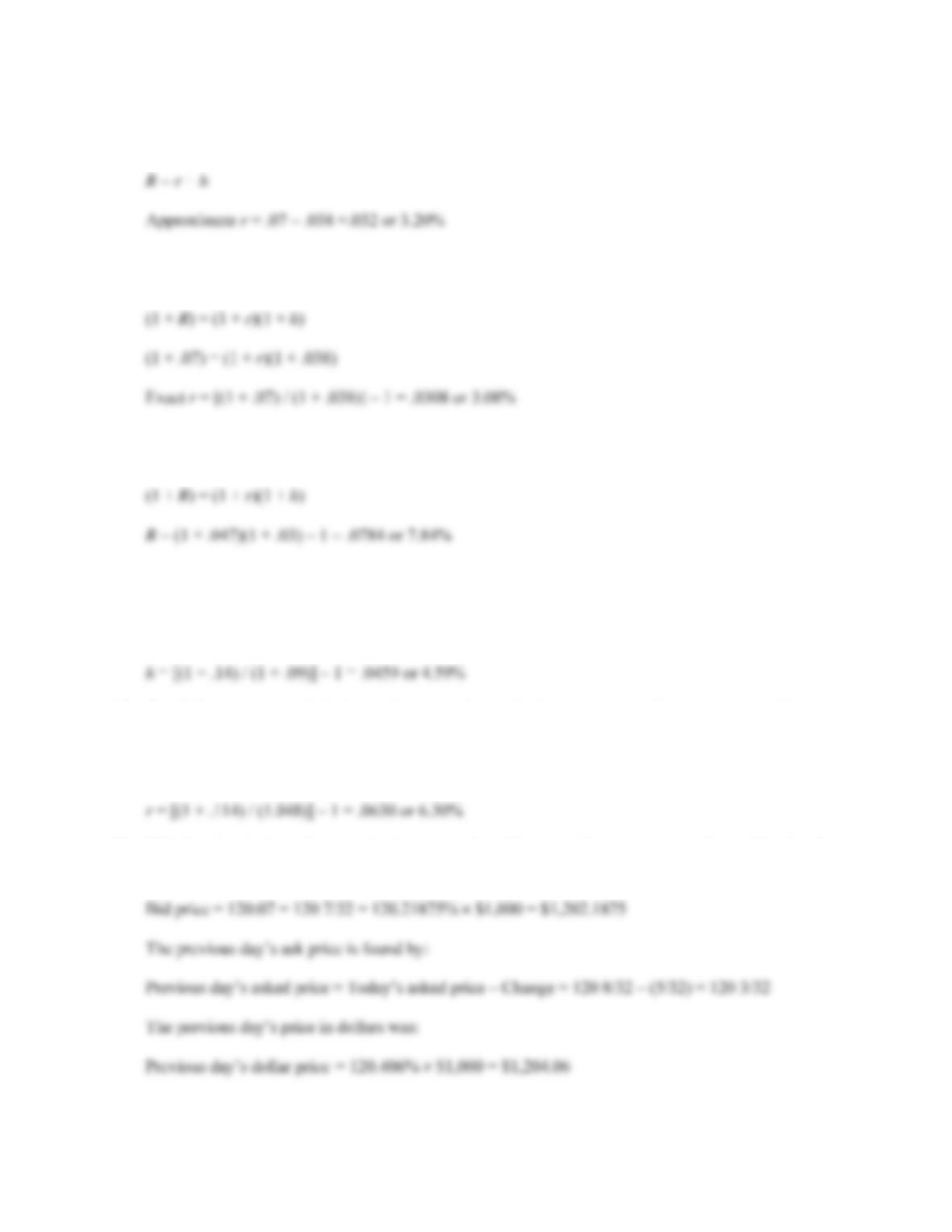CHAPTER 7 B-119
10. The term structure is based on pure discount bonds. The yield curve is based on coupon-bearing
issues.
11. Bond ratings have a subjective factor to them. Split ratings reflect a difference of opinion among
credit agencies.
12. As a general constitutional principle, the federal government cannot tax the states without their
consent if doing so would interfere with state government functions. At one time, this principle was
thought to provide for the tax-exempt status of municipal interest payments. However, modern court
rulings make it clear that Congress can revoke the municipal exemption, so the only basis now
appears to be historical precedent. The fact that the states and the federal government do not tax each
other’s securities is referred to as “reciprocal immunity.”
13. Lack of transparency means that a buyer or seller can’t see recent transactions, so it is much harder
to determine what the best bid and ask prices are at any point in time.
14. Companies charge that bond rating agencies are pressuring them to pay for bond ratings. When a
company pays for a rating, it has the opportunity to make its case for a particular rating. With an
unsolicited rating, the company has no input.
15. A 100-year bond looks like a share of preferred stock. In particular, it is a loan with a life that almost
certainly exceeds the life of the lender, assuming that the lender is an individual. With a junk bond,
the credit risk can be so high that the borrower is almost certain to default, meaning that the creditors
are very likely to end up as part owners of the business. In both cases, the “equity in disguise” has a
significant tax advantage.
Solutions to Questions and Problems
NOTE: All end of chapter problems were solved using a spreadsheet. Many problems require multiple
steps. Due to space and readability constraints, when these intermediate steps are included in this
solutions manual, rounding may appear to have occurred. However, the final answer for each problem is
found without rounding during any step in the problem.
Basic
1. The yield to maturity is the required rate of return on a bond expressed as a nominal annual interest
rate. For noncallable bonds, the yield to maturity and required rate of return are interchangeable
terms. Unlike YTM and required return, the coupon rate is not a return used as the interest rate in
2. Price and yield move in opposite directions; if interest rates rise, the price of the bond will fall. This
is because the fixed coupon payments determined by the fixed coupon rate are not as valuable when
interest rates rise—hence, the price of the bond decreases.







